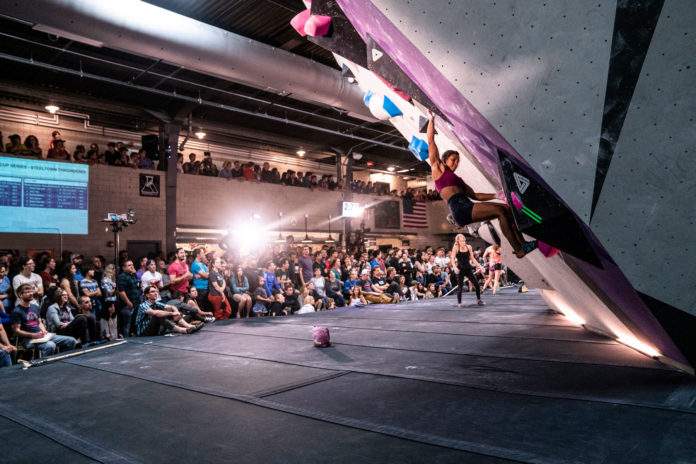This story is the third chapter of a five-chapter series on Professional Routesetting: The Truth Behind the Trade by Dave Wetmore. Scroll to the end of the article for bios of routesetters interviewed.
Read More Chapters of Truth Behind the Trade
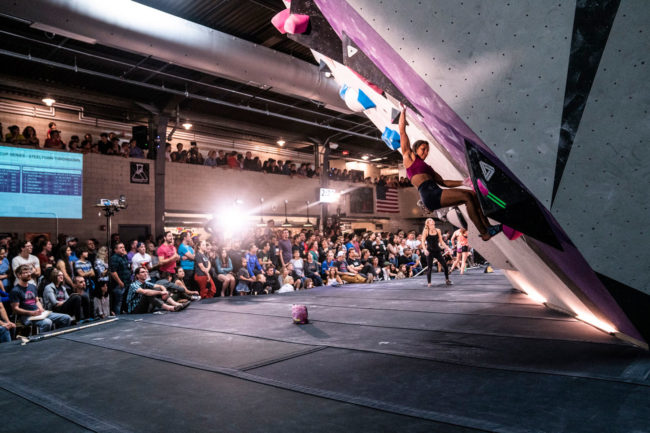
After teaching at a USAC Level 2 clinic several months ago, I sat down to dinner surrounded by 20 young setters chomping at the bit to work their way up the ladder. The big questions at dinner were: How do I make a name for myself? How do I make more money? What is the path of the professional routesetter that wants to make a salary with health care and paid time off, own a house, and have a family? And how long can you really do this for?
Wow, I thought, things have certainly changed since I started. I took a sip of my beer and the feeling that I had been doing this stuff for a long time―maybe too long―set in.
“The industry when we started [early 2000’s] is not what it is today for people coming into the routesetting game,” says Brad Weaver. “There was a lot of hustle and a lot of unknowns starting out back then. Routesetting as a career path wasn’t a thing. It wasn’t something that anybody really sought to achieve because it wasn’t real yet.”
Trying to “Make It” as a Routesetter
My interest in progressing and improving overall as a setter was not the only factor that led me to take USAC clinics all those years ago. The motivation to participate in USAC wasn’t just about setting for local, regional, divisional and national level comps. The spark was rooted in a passion for climbing and to be part of something rad, yes. But there was more behind my intent than just gaining a broader view of the industry. Getting involved outside of the local gym was a way to momentarily break free from being just another replaceable cog in the ever-turning setting wheel.
I thought that in order to get my street creds―make a name for myself and eventually be able to leverage a livable wage―one sure-fire way would be to hustle the comp game. In the same way that a PhD might help separate you from others in your field, working your way up through the ranks of USAC certainly helped leverage my position within the commercial realm every year.
If you want to be able to ask for more money and eventually make a decent living drilling plastic, patiently and relentlessly contributing to the competition circuit within USAC―both youth and adult―is one way forward within what was once considered a bleak monetary market. Ironically though, the reason these clinics were developed in the first place was to share ideas and provide a communal framework of setting progression specifically designed for competition, not necessarily to professionalize the commercial trade.
“I worked so hard to make routesetting my career. From becoming a national setter to making this obscure job a profession with a salary and benefits. That was my track. In my opinion, based on what I’ve done in the past, if you want to be a setter and make this your career, you have to progress in the comp world,” says Mountain Helt.
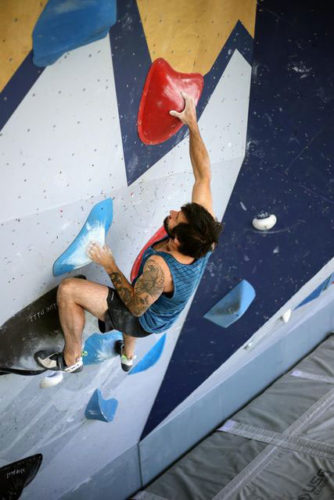
There are certainly plenty of accomplished and respected routesetters who have not had this type of progression in the competition realm, but what competition setting does is force judgment. It really tests you―over and over―with the results, the eyes on you, and the response of those you work with. Under the limelight of comp setting, you really learn over time whether you are as good, as strong, as creative and as fun to work with (turns out being a hermity curmudgeon is not good for business) as you might think you are. Unfortunately, regardless of past achievements, being a top competition setter has a time limit that’s restricted to a short window at the peak of one’s career.
“Setting USAC comps is not a career. It’s a privilege you get for a little bit of time on your path to solidifying yourself as a professional routesetter,” adds Helt.
But today, it’s no secret in the industry that it’s hard for setters to get started on and move up this track because USAC clinics are so backed up. And frankly, some people feel that this idea of getting ahead by working your way up through the USAC competition routesetting ranks is seriously missing the mark.
“We’d do the industry a service if we stopped saying that USAC creds equate to good commercial setting. It’s just stressing the USAC system unnecessarily and not creating the commercial gym setters we need,” says Jackie Hueftle.
“I have a really hard time when gyms are equating USAC setting levels for competitions within commercial gym pay scales. Comp climbing is not commercial climbing, and too many gym owners don’t understand the difference. USAC levels for commercial hiring and pay grade aren’t effective for any levels less than L4. It’s far more about the years a setter has been working and learning and who they have worked with and learned from,” explains Molly Beard.
Judging a setter’s ability and value based solely on their experience within USAC―a factor that is usually very limited by time, affordability and opportunities per year―is indeed short-sighted. Luckily, comps and clinics aren’t the only way to advance your career. Traveling pros are rapidly expanding their customizable clinics while in-house, experienced setting directors―like Ward Byrum at Movement and Kasia Pietras at MetroRock, among many others―continue to proliferate their influence over young and eager setters. Gym chains like Bouldering Project, as well, have been working towards more in-house training and even certification. The examples of alternative ways setters have been working to make professional development in the trade more accessible are endless, and the industry is better for them.
But while I agree that one’s competition setting experience should not be the only merit used to assess one’s general routesetting ability, I also strongly feel that it should not be completely discarded and ignored as if it holds no weight in one’s understanding of commercial setting patterns and trends. Basically, if you can fairly and safely separate a hundred competitors at a divisional or national event―or higher―then I think the chances are pretty good that you can also consistently set well for local climbers. This is not a hard rule, but it does hold true to my own personal experience.
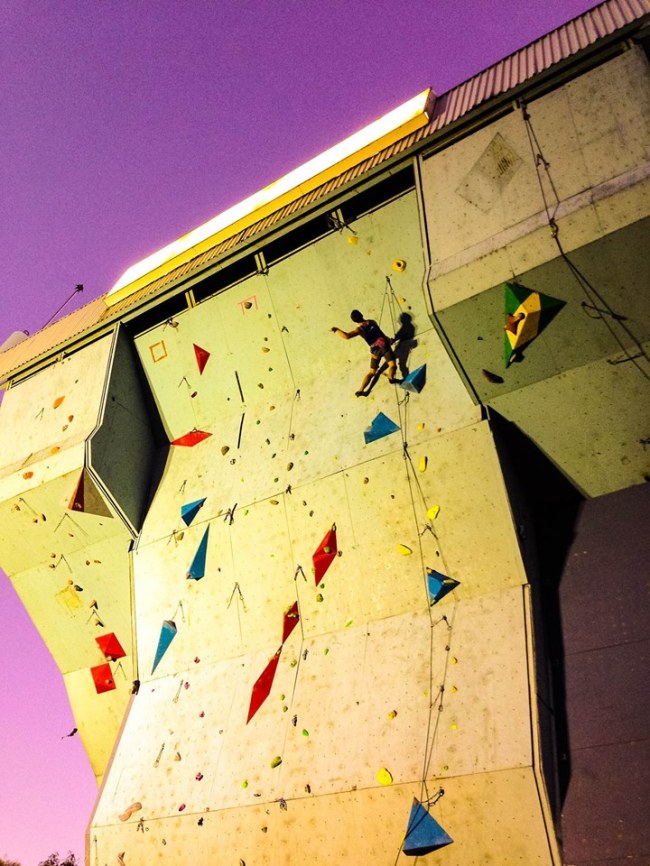
Trial by Fire Does Forge You
Chiefing Youth Pan-American Championships on outdoor walls in Mexico City years ago was the most challenging setting experience I’ve ever had. I set multiple onsight rounds for hundreds of the world’s best youth bouldering competitors with two non-English-speaking local setters who had never set a competition before. We had one heavy, non-extendable iron ladder, a bucket of rusted bolts, and several bins of old, polished crimps and knobs. No volumes. The panels on the walls would routinely rip off while forerunning. Old mattresses were used for pads.
My team―two setters and myself―were responsible for setting, forerunning, removing, plugging and re-installing six qualifiers, five semifinals and four finals. Each round was designed for male and female youth C, B, A and Junior competitors. That’s 15 boulder problems per category, which equals 120 boulder problems in total. Each one of these problems is not only meant to be creative, fair, and test a variety of skills, but they are also meant to divide the field of play as best as possible.
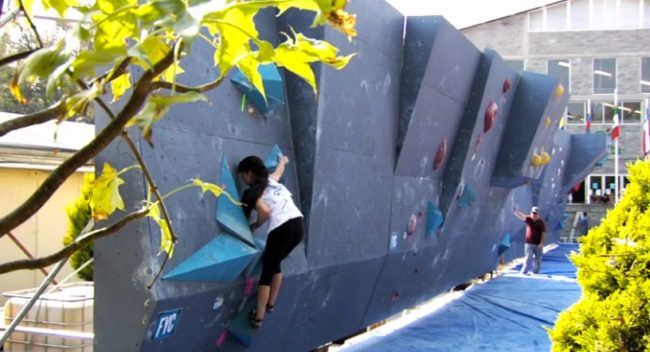
Every boulder should get topped. If something is too easy, it will be flashed by everyone and there will be ties. If something is too hard in a particular spot, there will be a bottleneck with everyone failing at the same point, and thus more ties. The margin for error is slim. An effective setter in this realm must be swift in their decision-making process, aware of their physical calibration with regard to not only intensity and complexity, but also with the subtleties of risk and movement comprehension under the stipulation of the four-minute onsight window. All of this during a five-day stretch of chaos, consisting of fourteen-hour days of nonstop setting, forerunning, stripping and resetting to get it all done.
I messed up more than a few boulders. I’ll never forget the scowls from parents as they watched their kids either fall too soon or have too many competitors do too many boulders. They would look at me like I had failed them intentionally, messed up their big dreams. Like I had no idea what I was doing. Like I didn’t care. I’ll never forget how frustrated I felt by that. They hadn’t a clue what we had been through to even pull it off.
Due to malnourishment, sleep deprivation and overall stress, I ended up in the ER during semifinals. So how exactly does this experience help foster my growth as a gym setter?
Admittedly, most setters will never face such dire conditions. My point here is: having the opportunity to travel and face new challenges in fresh situations can offer invaluable experience. If a person can show up to a foreign city, efficiently and effectively set with people they have never worked with before who may not share a common language and who also have never set a competition in their lives, and then proceed to set, forerun, tag, strip and re-set over one hundred very specific boulder problems that end up separating hundreds of the world’s best youth competitors over the course of a three-day event, then I believe the chances of that person being able to set effectively in the tranquility of their comparatively low-stress and familiar environment are pretty gosh darn good.
If that same setter can repeatedly perform under the burden of competition results for a high-level competition, dealing with countless unforeseen variables along the way, then surely they can return home to their local gym―to a crew they know very well, equipped with a diverse hold and volume selection, bolts that don’t need a day-long soak in a bucket of WD-40, ladders that don’t require three people to move them, wall panels that don’t rip off while forerunning, and pads that won’t break your back―and proceed to set fair, functional and fun boulder problems for the general public over the course of a more relaxed eight-hour day.

Comp vs. Commercial?
After Pan-Americans, like many other comps I have had the privilege to set for, coming home to routeset in my home gym always feels like coming down off a big wall that you never should have ventured up in the first place. Solid ground. No major risk and consequences lurking around every corner. Just cruising with the homies, exploring movement, vibing with the community, and enjoying climbing for what it is. Showing up to work on a Monday morning the next week after an event always feels like a sigh of relief, to say the least. As a setter who has worked on all sides of the industry for many years, I can tell you that setting an interesting V3 that appeals to a wide range of people is not nearly as challenging as setting a four-problem final that separates high-end athletes from one another.
It’s worth it to mention that we haven’t even begun to discuss the financial benefit from a youth team perspective. Many gyms make money from team programs, and often the better a team does then the more kids will likely join. Thus, having a high-level competition routesetter at a home gym is also more and more appealing these days―especially as the youth competition circuit surges amidst the ripples of Olympic Games inclusion.
I say all this not to prove a point in an argument about whether comp setting is inherently more valuable than gym setting experience, but rather to highlight the growing gap in professional development opportunities for setters in the industry. Even if we are far from the early 2000s period that Weaver referenced at this article’s outset, today there are still far too few opportunities to gain the setting knowledge and experiences that I and my colleagues have had the privilege to benefit from (minus the hospital visit). Oftentimes when a pressing issue is framed as an either-or debate―such as USAC certifications versus commercial setting experience―the simplest and best answer is yes. The industry needs more comp clinics and gym-specific setting education, and they need to be more available to all.
“Not enough respect is given to mastering beginner grades, even though they contain the building blocks necessary to unlock harder moves,” attests Jackie Hueftle, for instance, who is part of the CWA Routesetting Committee discussing these very concerns in commercial routesetting.
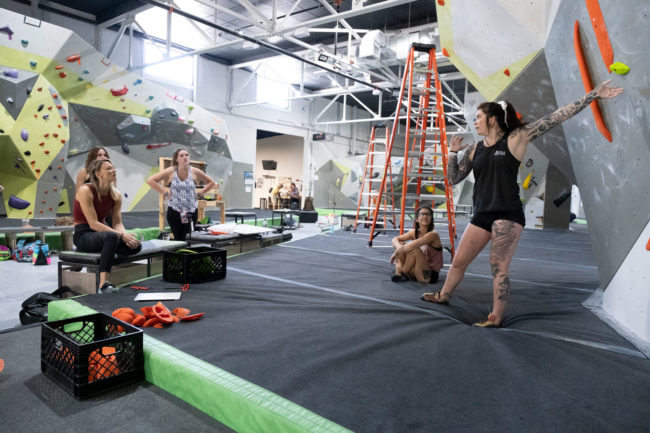
Because for all the progress we’ve made, there’s still more to be had. For many setters I’ve spoken with, it can still feel like the only way to snag (and keep) a Head Setter position is the blue-collar struggle of grinding it out at the gym for years. Put in 40 to 50-hour work weeks washing, stripping, maintaining, setting and forerunning routes and boulders five days a week, and executing your own comp series until you don’t know which way is up or down.
Yet even if it’s hard, many routesetters still choose this work rather than jumping ship. And you know what? I admire them. That work ethic has shaped the backbone of my approach as a setter and as a climber. Show up. Check your ego. Work hard for the sake of pursuing quality and mastery, not just for the money. Since climbing is a privilege and routesetting work is an extension of that privilege, why not go all in?
Today, more gyms than ever are searching for routesetting talent to fill upper-level setting positions. With a little luck and the right timing, third and fourth generation routesetters coming up in the early 2020’s can skip the rugged, entry-level years and step right into a routesetting program at a gym chain and earn a full-time salary with paid time off, health care and other benefits. But what many setters don’t know is that there is often a glass ceiling waiting for them at the top. In the next chapter, we’ll explore the physical, mental and financial sustainability of a professional routesetting career.
Read More Chapters of Truth Behind the Trade
About the Setters
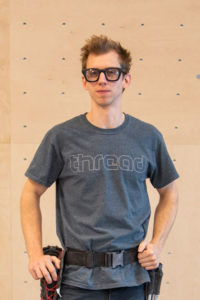 Brad Weaver
Brad Weaver
Brad is a Level 5 USAC National Chief Routesetter and IFSC Junior Routesetter who previously developed and managed the routesetting program for the Stone Summit chain of gyms in the Atlanta area until 2019. Brad has worked at each USAC National Championship competition in the past decade―adult and youth, bouldering and lead―and has set numerous international competition events and youth competition training camps. He now works with his colleague Chris Danielson at Thread Climbing.
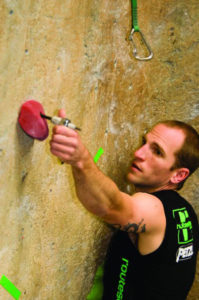 Mountain Helt
Mountain Helt
Mountain Helt (formerly Mike Helt) has been a pro-setter since 1995. He founded the influential website, Routesetter.com, as well as Climbing Business Journal. Mountain helped create the current USAC setter certification system and was a lead instructor for over ten years. He is a USAC Level 5 National Chief and since 2007 has set numerous IFSC World Cups and National championships. He currently lives in Reno where he is the co-founder of Mesa Rim Reno and serves as its Head Setter.
 Jackie Hueftle
Jackie Hueftle
Jackie Hueftle has been routesetting since 1998 and has been a USAC Level 4 setter since 2008. As a young competitor she represented Team USA at Junior Worlds and since then has coached for and set numerous competitions of all levels, including three years as chief of Womxn Up and several years as Head Setter at The Spot in Boulder. She is the owner of Kilter Grips, co-founder of The Routesetting Institute, a member of the CWA Routesetting Committee, and part of an International effort to professionalize routesetting.
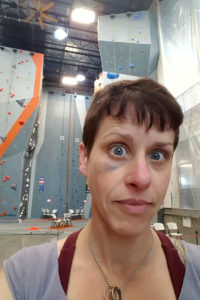 Molly Beard
Molly Beard
Molly started climbing in 1993 and began routesetting in 1995 after getting involved with a youth climbing team. She became the first U.S. woman to earn L5, chiefing three Youth Nationals in 2008-2009. She loves Mexican cuisine, BJJ, Hello Kitty, and chainsaws almost as much as her impact driver.
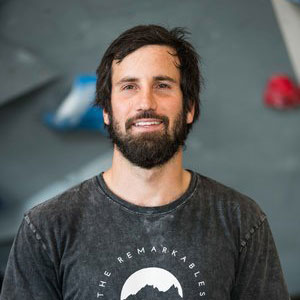
In the early 2000’s, Dave started screwing things to the walls inside of his shed. Two decades later, he is still doing the same thing, only on slightly nicer walls with more advanced materials. After studying journalism at the University of New Hampshire, he unwittingly fell into the then emerging trade of routesetting. These days, he fancies himself a writer and hopes that his stories might help others shift their perspective or share a laugh, or both. Dave is currently the head setter of The Boulder Field in Sacramento, California, and has been published in Climbing, Rock and Ice, Experience, and Urban Climber, among others.



